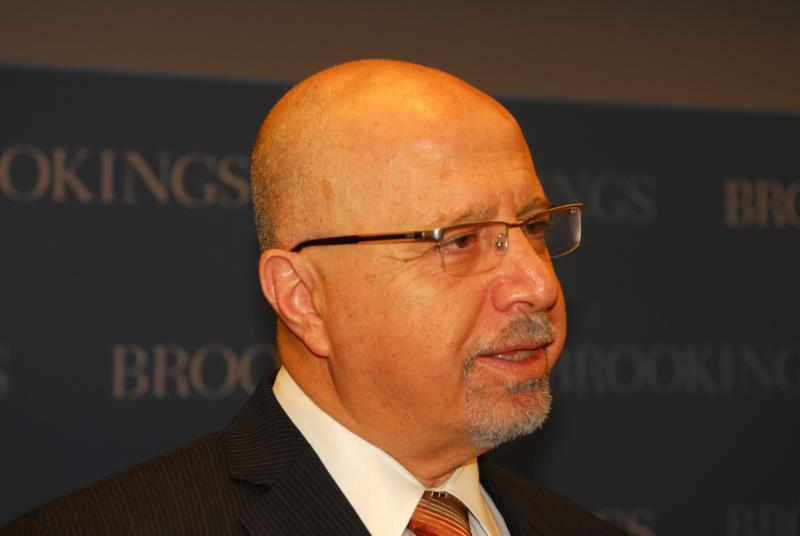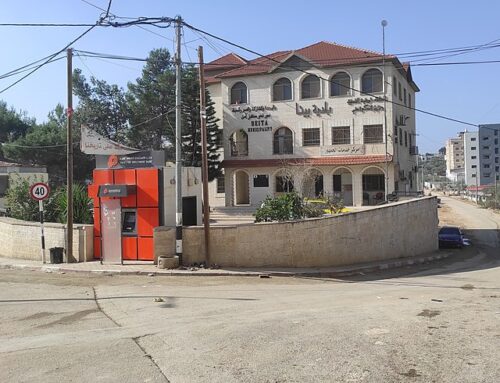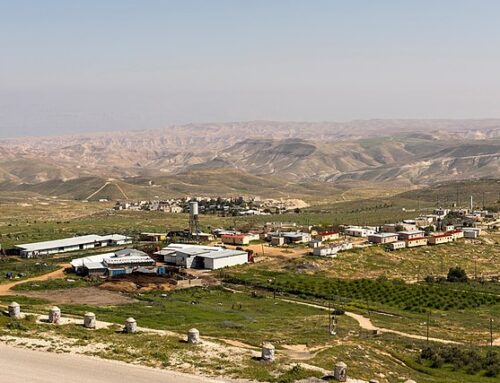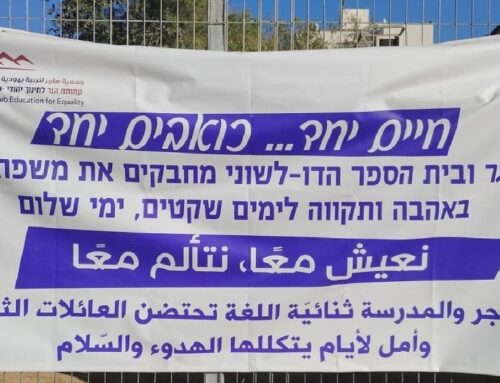Thomas G. Mitchell, Ph.D., is the author of When Peace Fails: Lessons from Belfast for the Middle East and Israeli Military Politicians from Dayan to Barak (forthcoming). Here he follows up on his overall review of The Peace Puzzle: America’s Quest for Arab-Israeli Peace, 1989-2011, by Daniel C. Kurtzer, Scott B. Lasensky, William B. Quandt, Steven L. Spiegel and Shibley Telhami (Cornell University Press and U.S. Institute of Peace, 2013), with a focus upon one particular chapter:
 |
| Prof. Shibley Telhami |
After reading Shibley Telhami’s chapter on Camp David II, I decided that it was worth a separate review. In a mere 49 pages, Telhami serves up a multilevel analytical feast. The appetizer is a comparison of the international situation of the United States at the time of Camp David I in 1978 and then in 2000 at Camp David II. The next course is a discussion of the principal parties at the individual level and how they interacted. Those discussed include: President Bill Clinton, PLO Chairman Yasir Arafat, Prime Minister Barak, Mahmoud Abbas (Abu Mazen) and Ahmed Qurie (Abu Ala’a), and then the members of the American Mideast team.
Telhami includes the fullest discussion that I have seen of the bete noire of many Camp David narratives, Dennis Ross. Ross is analyzed through both attributed and unnamed sources. In the eyes of the Palestinians, in addition to being too close to the Israelis and too prone to serve as their attorney, Ross had a habit of not leaving a written record of his meetings with various Israelis and Palestinians, so the paper trail materialized with his memoirs. Telhami sees as problematic even the creation of Ross’s job as special Middle East coordinator, because it was a way of downgrading the diplomacy; so the Clinton administration could deal with the Arab-Israeli conflict not at the secretary of state level as the Nixon, Ford, Reagan, Bush Sr., and first Clinton administrations had done, nor at the presidential level as with Pres. Carter, but at a level equivalent to an assistant secretary of state. This had the advantage of freeing up Secretary of State Madeleine Albright to deal with problems in the Balkans and Eastern Europe, but also the disadvantage of sending a message to the parties in the region that resolving the conflict was not a high priority.
Telhami also noted that Barak and Arafat could not stand each other, much like Begin and Sadat at Camp David I. Barak did not trust Arafat, possibly because of his personal participation in counter-terrorist military operations, and felt that Arafat was incapable of making decisions. My own reading of Arafat is that he was totally a tactician and opportunist and not a strategist; he never understood that certain courses of action were mutually exclusive, such as negotiating a deal with Israel while still engaging in “armed struggle.” Telhami mentions that Barak’s involvement in the assassination of Abu Jihad, Arafat’s primary military/terrorist operative in Tunis in 1988 led to Arafat not trusting Barak. Moreover, Barak behaved with contempt towards Arafat at Camp David by ignoring him during meals and other such faux pas.
The main course is a discussion of the negotiations at Camp David II, largely confined to the Jerusalem issue. Telhami claims that the American team never understood the importance of Jerusalem to Arabs and Muslims because no one had specialized cultural knowledge about Arabs. Whether or not this is true, I have long felt that having a Middle East team that was completely Jewish, along with a Jewish national security adviser and a secretary of state of Jewish parentage, was asking for trouble in terms of perceptions in the Arab world. Just think if the Middle East team had consisted of Philip Habib, Telhami, Rashid Khalidi and Fouad Ajami! Telhami also faults the Clinton team for not having arrived at the Israeli and Palestinian bottom lines on Jerusalem and a number of other issues before the summit. This exemplified poor preparation for the summit that characterized the American team, possibly as a result of going into the summit at the request of Barak, rather than as an American decision.
Telhami also noted that Arafat had made his ahistorical claim that the Jewish Temple Mount was really in Nablus rather than in Jerusalem on several occasions previous to Camp David. Israeli Orientalist Barry Rubin claimed that Arafat chose to make his stand on Jerusalem for tactical reasons, because this would have a wider resonance in the Muslim world than refugees or borders.
Telhami then discusses Clinton’s decision to consider Camp David to have been a failure and to blame Arafat as responsible for that failure. Telhami thinks that much progress was made at Camp David and that if Clinton had immediately issued his parameters after the summit that he might have ended up with a settlement before he finished his term. I think this is unlikely given the Palestinian political situation, with the potential threat to Arafat posed by the Islamist parties. But if Clinton had issued his parameters immediately after Camp David without attributing blame to the Palestinian side, he could have made enough progress to help a future president broker an end to the conflict. Instead, by blaming Arafat, Clinton almost guaranteed that the Al-Aksa Intafada would break out and that Barak would be perceived as a freier (sucker) by the Israeli electorate.
This is where psychoanalysis has a role to play—something that Telhami does not contemplate. Much has been made by previous commentators on Camp David of the importance of the personalities of both Barak and Arafat for causing failure. Barak refused to take advice from others and was supremely confident in his own role as a political strategist even though he was new to politics. This was a result of his brilliant military career as a special operations officer and his rapid rise in politics. Rabin had similar achievements but was much more modest and centered than Barak. Arafat, as mentioned, refused to take final decisions and suspected everything as either an American or an Israeli trap. Arafat also was happiest when he was hunkered down defying his enemies as in Beirut during the Israeli siege in 1982 or in Ramallah from 2002 to 2004.
But no one has done a psychological analysis of Bill Clinton and its effect on his diplomacy. It is well known that Clinton had two very different ways of dealing with people: as persuader when he was trying to win over opponents or people in an audience and his conduct with subordinates. George Stephanopoulos and Dick Morris have told stories about Clinton’s temper when dealing with aides he felt had either screwed up or betrayed his trust. Clinton apparently indulged in temper tantrums as a stress-relief mechanism when he perceived it as politically safe. This is what he did at Camp David with both Abu Ala’a and Arafat. The result was that Abu Ala’a shut down for the remainder of the summit and did not use his persuasive powers on Arafat. With Arafat it was even worse, as Arafat saw that the political route was blocked and opted for a return to armed struggle. Clinton could have been acting out at the person he perceived as having ruined his best shot at a great historical legacy that would remove the stain of his impeachment.
Among Israelis there is a debate as to whether the Al-Aksa Intafada was a spontaneous reaction to Sharon’s armed presence on the Temple Mount at the end of September 2000, or whether it was a preplanned strategy with Sharon’s visit merely serving as the trigger. Telhami takes the first position—that of the Israeli Left—without discussing the other position, which is that of the Israeli Right and people like journalist Yosef Bodansky and academic Efraim Karsh. I tentatively take the latter position, but realize that the evidence is very incomplete.
But now that Camp David I (1978) has become the subject of a Broadway play, it is time that Camp David II be studied psychologically to look at the negotiation dynamics and the psychologies of ALL the main parties involved.






Leave A Comment